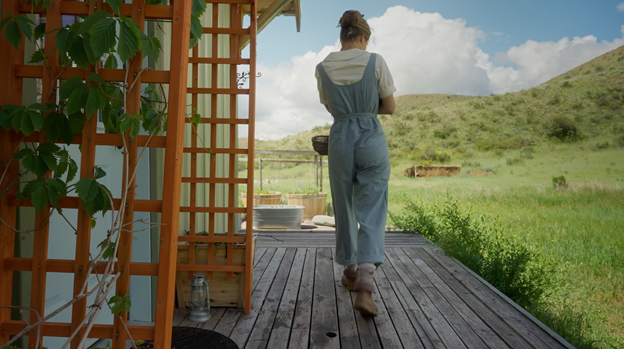The Rise of Silent Vloggers Indicates a New Era in YouTube Uploads
YouTube Creator TheCottageFairy, who has amassed over 600,000 subscribers in one year, starts her day by tending her garden in a video titled “the beauty of an ordinary life – social media and simple living”. Image courtesy of TheCottageFairy.
October 6, 2021
There is a new niche of YouTube content creators who have reaped the advantages of a wider audience: silent vloggers. This contradicts the clickbait-ridden nature of the platform and indicates a new era in its ecosystem, aimed at a diversified demographic. Out of all social media platforms, YouTube has seen the most significant growth among American users during the pandemic, according to the Pew Research Center in 2021.
Organic sounds coupled with loosely edited clips of aesthetic scenes of mundane everyday life is nothing new; therapeutic silent vlogs have been around for half a decade already. However, this genre did not gain significant viewership until the onset of the coronavirus pandemic. Perhaps the root of the cause was zoom fatigue or the urge to escape from the anxiety-ridden reality and identify oneself with an online stranger showcasing their aesthetic and comforting life in isolation — one significant reason, however, is the wave of new silent vloggers that emerged during the pandemic.
Among many reasons why silent vlogs are popular among a wide population of creators is that this genre is mostly anonymous — the face of the subject is outside of the frame or only shows an ambiguous side profile of the face. This allows for a less intimidating start for new creators if they are unsure of their channel’s growth potential. In addition, silent vlogs have a low production value and require little to no research, which makes the production process less time-consuming than other genres.
Silent vlogs are also philosophical. These videos usually have one main subject, in isolation from the rest of the world, showcasing elements necessary for human survival: food and housing. These vloggers center their content around subsistence: cooking their own food in their kitchen, keeping their indoor space tidy, and some even own a small vegetable garden that provides the bare minimum for survival. The pandemic naturally drew many people’s attention inwards and led them to return to essential things necessary for human survival: food, a roof on top of their head, and companionship. Perhaps, the latter was the only vital element missing from their isolation and led consumers to be drawn to silent vloggers who they could identify with, but also make them feel less alone.
Increased number of active content creators and consumers on YouTube was a huge win for the Google-owned platform. According to Statista, the global business data platform, the website generated nearly 19.77 billion U.S. dollars in 2020, up from 15.15 billion U.S. dollars the previous year.
There’s nothing special about silent vlogs on the surface level: cleaning, cooking, working, studying. However, for most, it certainly is a more elegant reality. Silent vlogs are carefully curated to fit a certain aesthetic, be it modern chic, cottage core, or dark academia, which allows for a specific demographic to be drawn to a particular channel. This gives viewers the experience of the glamorized reality of these vloggers’ lives that are close enough to their own to gain vicarious satisfaction.
So what does this mean for the future of the YouTube ecosystem? Political frenzy, the chaos of the pandemic and environmental disasters coupled with significant exposure to social media attract consumers to timeless and relatable content that feels more like a wholesome therapy session rather than a content-rich lecture. The diversified age range of YouTube users will self-evidently diversify the content being put out, including silent vlogs and educational videos that pertain to the interests of a wide demographic, contrasting from the click-bait saturated videos that only a small demographic could enjoy in the early days of YouTube.

